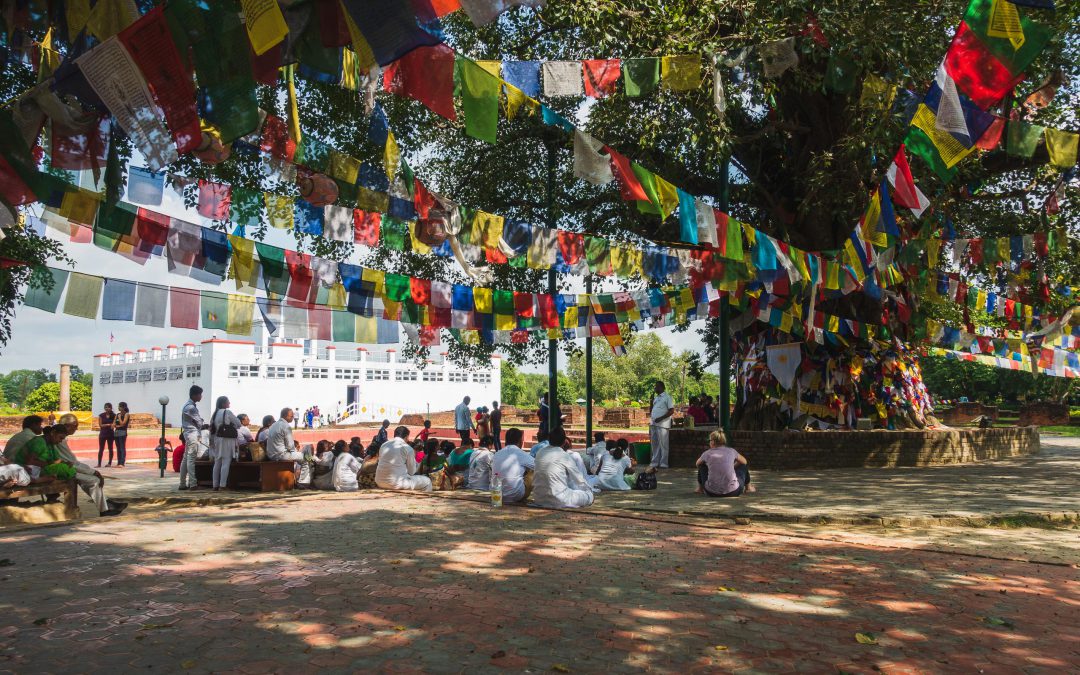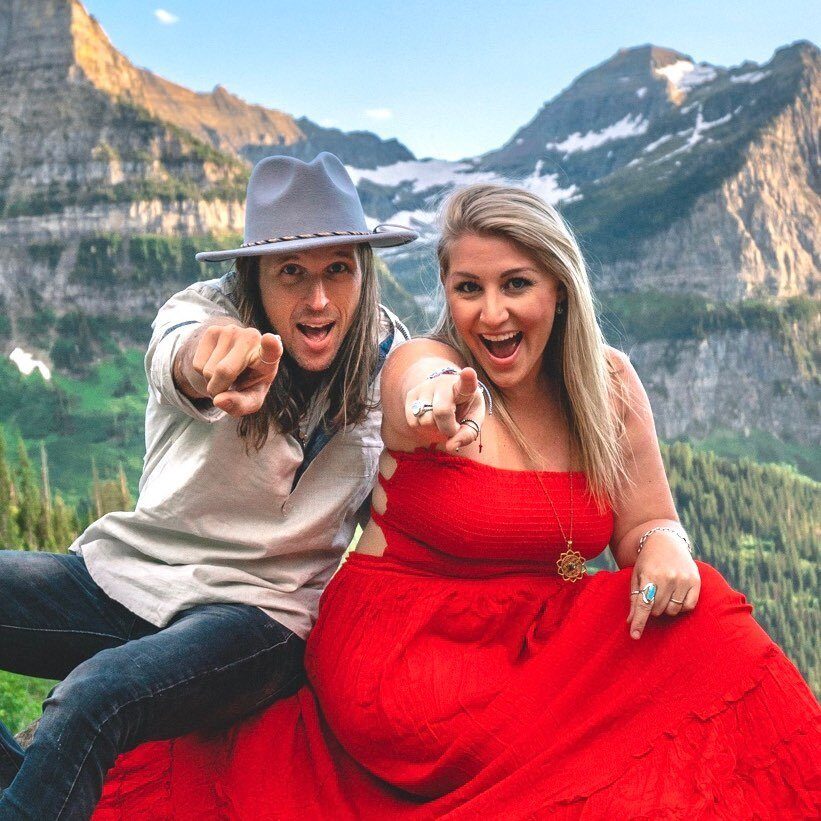Nepal is home to one of the most significant religious pilgrimage sites in the world; the birthplace of Siddhartha Gautama. This man, roughly 35 years later attained enlightenment and will forever be remembered as the Buddha. Getting to Lumbini from Pokhara proved to be a bit of a challenge. The route is not regularly traveled by the tourist buses, and the local buses are very inconsistent and unreliable. Further adding to the challenge was the fact it was mid-Diwali/Tihar festival, the most significant holiday in India and Nepal, meaning there was no guarantee ANY buses would be running at all. Since we were on a tight timeline, we opted for a private car to get us down to Lumbini. The ride was somewhat bumpy and a bit treacherous at times, leaving us to wonder how a bus could even make this journey. We traveled south out of the mountains and into the flat grassy lowlands. No longer were we in the cool, crisp mountain air. We now found ourselves in the humid and sweltering hot southern border of Nepal. Lumbini is located only 3 miles from the border with India. In total, the trip took us about 6 hours. Our small private car felt like a limousine compared to our 10-hour marathon bus journey from Kathmandu to Pokhara.
The Hotel Peace Palace Nepal would serve as our home for the next two nights. The accommodations were modest, but the AC blew cold, and that was a relief! We decided to get dinner at the restaurant below the hotel and plan our next day exploring Lumbini.
Our hotel was situated directly across the street from Lumbini, but all we could see was an iron fence enclosing what looked to be a dense jungle. Beyond that, we couldn’t see much else. We chose our hotel based on its proximity to one of the main gates into Lumbini, but being there in person we realized how expansive the grounds of Lumbini are.
Lumbini is a 3 mile by 1 mile Buddhist monastic preserve and is a UNESCO World Heritage Site. The site contains the Maya Devi Temple, Ashoka Pillar, Puskarini (holy pond), eternal peace flame, World Peace Pagoda and several Buddhist monasteries from all over the world. There is quite a lot to experience.

As we sat talking about what we wanted to see I noticed only one other person was eating in the restaurant with us. His patchy beard and shaggy hair led me to believe he was a seasoned traveler and might be able to provide some tips for seeing Lumbini. I started up a conversation, and we quickly learned his name, Julian, he was from Belgium and had recently arrived in Nepal after several months of travel through India. (My intuition was spot-on.) It turns out that Julian had been in the Lumbini area for a few days. He had seen the monastic area and temple grounds already but was suffering from an intestinal bug that had held up his departure. As we chatted, he provided us the insights and tips I was hoping to get. His strongest recommendation was to rent a bike to get around because Lumbini is big and it gets hot by midday. We were grateful for his advice and bid Julian farewell.With a bit more knowledge and confidence in our plan to see Lumbini we headed up to our room for some rest.
The next day started early. After breakfast, we saddled up on our rented bikes and pedaled towards the gates of Lumbini. Along the way, there was limited signage directing which way to go. I was confident in the direction we were going though, and a quick peek at Google Maps confirmed we were on the right course. After about a ¼ mile we finally arrived at a small ticketing kiosk and caught our 1st glimpse of the Maya Devi Temple. It was a prominent all-white brick building with a small pinnacle on top bearing the eyes of Buddha. The significance of this site was immediately apparent. We parked our bikes, purchased our admission and were instructed to remove our shoes before entering the Maya Devi Temple grounds. Having to remove our shoes was a surprise at first, but as we walked along the cobblestone path leading towards the temple I was glad to be barefoot. It connected us more to the environment and coming from a home where you removed your shoes before entering it was further evidence of the respect these grounds deserved.





The Maya Devi Temple grounds include the sizeable white temple built atop the stone that is believed to be where Buddha was born, the Puskarini (holy pond), a massive Bodhi tree, the Ashoka Pillar containing the oldest inscription found in Nepal, and remnants of several old brick stupas. As we walked around, an unintentional and unconscious silence fell between us. The feeling we had seemed to outweigh our default reaction to excitedly point out and share all the unique or interesting things we were seeing. The area was not very busy; I’d guess there were only 20 other people there with us. Julian had warned there could be a long line to get into the Maya Devi, but we got lucky and were able to casually walk in.
There were signs at the entrance requesting no cameras allowed within the temple; I was happy to oblige. Inside we walked along a wooden catwalk raised above the brick remnants of a much older structure. The catwalk encircled the perimeter, and a walkway led towards the center. There a single stone sat housed in a glass enclosure, this marked the birthplace of Buddha. All around the stone were a myriad of offerings. There was a masonry relic wall covered in gold-leaf and a large boulder bearing a carved nativity scene that weathered by time.We took our time and let the significance sink in.
I was wearing a mala that I had made for myself several years ago which I regularly wore and used for meditation. I took it off and held it against the gold-leafed relic wall. I subtly hoped that it might absorb some source energy. There in quiet reflection, I felt like we were no longer travelers, but truly pilgrims. This experience moved us a few small steps further along our path to enlightenment of mind and purity of heart. It was an irreplaceably beautiful experience.
Walking out of the Maya Devi I felt a profound sense of bliss and understanding. We had felt something incredibly unique in that temple, and that something had a lasting impact. It seemed the sun shone brighter than it did when we had walked in, and its rays felt warmer on my skin. I was comfortably at peace with our place in the world. Outside the temple, was a large pond; the Puskarini. This holy pond is believed to be where the Buddha received his first bath after birth. Beyond the Puskarini was a great bodhi tree draped with hundreds of multi-colored prayer flags.

We made our way around the pond toward the enormous tree. The waving prayer flags created a secondary canopy beneath the tree canopy; the light that peaked through the leaves was filtered through the multi-colored flags casting a warm glow on us. A ‘holy’ man pulled us both aside and offered us a blessing. He spoke softly in Nepalese as he blessed us rubbing a small red dot on our foreheads and tying a rope bracelet on us. After our blessing, he gave us each a stick of incense and motioned for us to encircle the tree in a clockwise direction. Finally, we lit the incense and placed it into a small offerings table at the base of the tree. Afterward, we sat beneath the canopy in quiet meditation. The significance of our experience rushed through me. There, in that absence of time, I was moved to tears. THIS is why we made the pilgrimage. We were humbled and so grateful that we came to Lumbini.

Adjacent to the Maya Devi Temple is another historically significant relic; the Ashoka Pillar. Standing around 6 meters tall it bears the oldest inscription ever found in Nepal. This relic is easy to overlook and bypass on your way into the Maya Devi, and we nearly did. Discovered in 1896 the pillar marks the visit by Emperor Ashoka to the holy birthplace of Buddha and the inscription grants all those residing in Lumbini free from taxes.


Leaving the Maya Devi temple grounds, we donned our shoes and set out to see the rest of the Lumbini monastic area. We briefly stopped off at the eternal peace flame and then followed the canal toward the Peace Pagoda. This large white pagoda is seated directly opposite the peace flame at the end of the central canal. We were both surprised at how bright white and clean the pagoda looked. It was an imposing symbol of peace and purity. Leaving the pagoda, we pedaled along some of the interior roads which led to the monasteries within Lumbini. As we explored, we realized no two monasteries looked exactly alike. Each had a unique architectural style that reflected the country of origin. The monasteries of Japan, China, and Germany were among the more prominent and spectacular of them all.


By this point, Jessica and I were starting to feel the heat. There wasn’t a cloud in the sky, and the sun was bearing down on us. We noticed our bottles were were running low on water, so we decided to make our way back towards the hotel. On the way, we were held up briefly by a group of elephants and their mahouts who were clearing tree debris that had fallen and blocked the road. The elephants effortlessly lifted the downed debris with their trunks and passed them overhead to the mahout who secured it on their backs. Jessica was head over heels for the elephants. Seeing them up close like this allowed us to genuinely appreciate how magnificent these animals were. Once the road was clear and their loads secured, they casually passed us by and continued down the road. It was a bit unbelievable. But, then I reminded myself, “you’re in Nepal – expect the unexpected.”

Back at our hotel we returned our bikes and were in desperate need of a cold drink and a place to sit in the shade. We wandered over to the mini-mart next to the hotel, and I went straight for the beer cooler. The rush of cold air that I felt from opening the cooler door was divine, and the chilled beer was just the remedy I needed. The shop was run by a lovely old Nepali man who insisted we sit and relax in the shade of his shop. He was so welcoming, and it made him noticeably happy when we sat with him. There was a language gap between us, and it was difficult to understand each other. However, we determined his name was Aayush and that he ran the shop with his two daughters. He loved having us sit with him, and once we finished with our drinks, he insisted we stayed and had some Nepali tea with him. He was such a sweet and loveable guy we couldn’t say no. His daughter brought us out a what seemed to be their finest porcelain cups and saucers with freshly made warm tea. The tea was excellent, and Jessica agreed it was the best we had tasted yet. We sat keeping Aayush company for quite a while and by the time we left it felt like we were old friends. We parted with a long hug.




